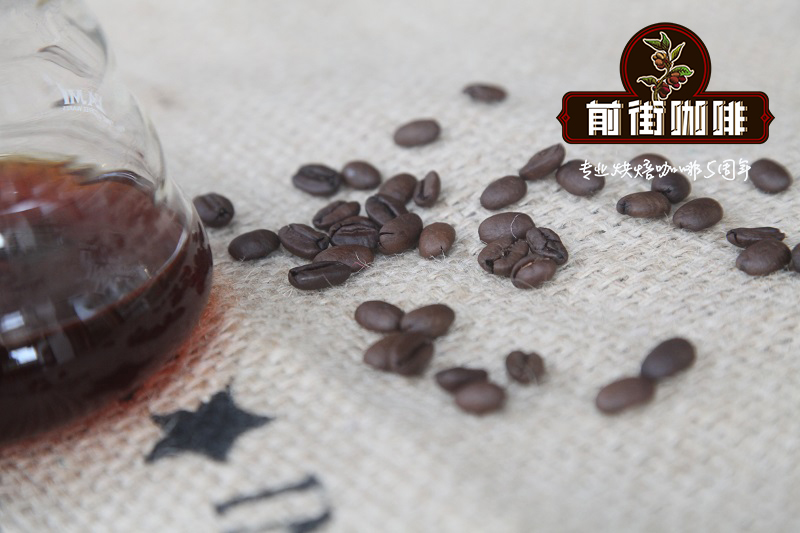What are the local conditions? How is coffee naturally affected by climate, soil, etc.?

We often hear the word "local conditions" when we talk about coffee, but what exactly does it mean? Does it have anything to do with the flavor of coffee? Why do we need to care about the local environment?
The author interviewed some people in the coffee and wine industries and asked them to tell you what was going on in the country.
What are the local conditions?
The word vernacular condition comes from French Terroir and is most often used in English when talking about wine. The Pamela of the South American Fine Coffee Alliance describes the soil as: "Terroir is literally soil." And the environment around the soil is wind and soil. "
But when it comes to agriculture, the soil will be more complicated. Pamela defines the soil of agriculture as: "the soil composed of specific substances, combined with the temperature of the surrounding environment, Rain Water, microbes, bacteria, climate, and the above conditions can be applied to agriculture. "
For the above description, a landowner put forward his view to the author: the local environment actually combines everything in the coffee growing environment. It is not only the soil and climate, but the environment as a whole, including the influence of local people and local agricultural knowledge.
Why is soil important?
Stefano, a wine merchant, points out that native soil brings out the characteristics of the variety.
However, due to local differences, variety characteristics will be developed in different forms. To put it simply, the local environment is actually the reason why Colombian coffee is different from Brazilian, Ethiopian and Indonesian coffee.
For example, even if you grow the same variety of coffee, it tastes different from coffee grown in Costa Rica at 1400m and 1900m in Panama. Even though the two countries are adjacent, Panama has a higher altitude and a colder climate, which brings more acidity and sweetness to the coffee.
For consumers, the local environment affects the flavor of coffee. But it has a far-reaching impact on bean bakers and farmers. When choosing the roasting degree of a cup of coffee, the baker must consider not only the potential flavor and aroma of the beans, but also the molecular composition of the beans, which is deeply influenced by the soil.
Farmers need to adjust the planting method and raw bean treatment method according to the wind and soil, which includes geographical conditions, climate and the allocation of agricultural resources.
Thiago of the coffee trading company said: "in fact, knowing the local culture is much more important than growing coffee." Because the soil will determine the growth of coffee trees, it will also affect the quality, cost-effectiveness, insect resistance and production capacity of coffee. "
Good soil and bad soil
The definition of good and bad is subjective, though, "I like this producing area very much." The coffee in this producing area is very good. "these two sentences are very common expressions.
Pamela said: "there is no such thing as bad soil, only the soil that is more suitable for the growth of certain varieties." "
Keith has a similar view on this, but he connects the style to the quality of the coffee. If a special variety is planted, it is not suitable in some producing areas or countries. He cited the cup scoring system as an example. If you score more than 80 points out of 100, you will be fine coffee. If you score more than 90 points, you will find coffee with sparse production and high price.
In the category of boutique coffee, consumers have a good impression of coffee in some countries. Farmers in countries such as Costa Rica, Colombia and Ethiopia are knowledgeable and good at growing coffee. Brazil and Indonesia often produce coffee by producing cash crops.
This implies many restrictions brought by the local culture, and despite the impression of Brazilian coffee mentioned above, they can still produce coffee that can participate in the excellent cup competition. and scored more than 90 points in the excellent Cup competition with nine sun-and honey-treated coffees in 2017.
The local soil of some countries may be suitable for the growth of specific varieties, which indirectly affects the flavor and cup test score of coffee, but it does not mean that these countries cannot produce other varieties.
Three key factors affecting the soil
According to the above, we know that wind soil will affect some characteristics of varieties, and some soil is more suitable for the growth of some varieties. At the same time, we can learn what kind of local conditions can make good coffee in the following content. There are three key factors:
1. Soil
Since the soil represents the land, the first key is of course the soil. "Minerals in the soil affect the alcohol thickness and acidity of coffee," Thiago said. Keith says volcanic soil is very suitable for growing coffee because it is rich in nutrients such as magnesium, phosphorus, potassium, calcium and zinc, which are needed for plant growth.
In addition, the volcanic soil has deep drainage, when the soil has more air circulation and is rich in organic matter, it can retain more water in the rainy season to prepare for the dry season. The soil will also directly affect the absorption of nutrients and minerals by plants.
two。 Climate
Coffee is usually grown in the producing countries of the "coffee belt", which extends all over the world, from the equator to Mexico and Myanmar, and to Brazil and Tanzania in the south.
Even in the coffee belt, there are still many different climate patterns, which are divided into a small range of weather and a large range of climate. Some coffee experts talk about the microclimate of coffee farms, meaning that the climate in a small area is significantly different from that in other areas, which may be caused by nearby canyons.
Keith says it's important to have a dry and wet season. The wet season contributes to the growth of coffee trees and fruits, and coffee trees absorb the nutrients they need. But when it comes to the harvest season, Rain Water is not a good thing, because Rain Water may break the fruit, slow down the drying efficiency of raw beans, and so on. As for the dry season, it is conducive to the harvest period, because the dry season helps coffee trees blossom, while flowering contributes to the growth of new fruits.
3. Altitude
The higher the altitude, the higher the sweetness and quality of the fruit. One reason is that high altitude increases the acidity of the fruit, which brings sweetness, which is similar to wine.
But the altitude here is actually more like talking about climate. Keith: "the climate and temperature vary according to altitude. Colder environments create higher acidity in wine and coffee." "
Thiago: "altitude directly affects the ripening process of the fruit. The slower ripening fruit has higher sugar content, so the flavor richness is higher and the bean density is higher." "
Since altitude is related to temperature, the distance between the producing area and the equator is also an important consideration, as well as the influence of wind. Altitude is a useful reference if you want to compare two manors in the same producing area. But it is of little reference value when comparing different countries, such as Ecuador and Mexico, or Yemen and Kenya.
Is style the most important thing for coffee?
"style represents everything in wine," says Stefano.
Discussing the local conditions is like the earth talking to you directly. When you hold the wine, you may not think that it is a product from the earth. For this reason, in recent years, in the wine industry, some people have begun to promote wine produced by natural cultivation, with the least degree of human intervention.
But does this also apply to coffee? Does style mean everything to coffee?
Keith says he thinks treatment is more important than style. If you know the impact and significance of each step, treatment will be more important than style. Because the treatment is the process of taking the coffee seeds out of the fruit. According to the harvest method, fermentation, drying and storage process of coffee, the treatment method can bring positive flavor or negative defective flavor, and at the same time improve or reduce the quality of coffee.
Thiago added: "soil can improve the quality of coffee, but it does not guarantee the quality of the last cup of coffee. The management of fruit and raw beans is important, from choosing the planting site to drying the raw beans."
Of course, we have discussed above that the treatment will vary according to the climate of different places. Brazil, for example, is famous for its sun-and honey-treated coffee, which brings sweetness and alcohol thickness because of its dry climate. In addition, Kenya is famous for its washing treatment, which will improve the cleanliness of coffee and magnify the natural regional flavor of coffee.
However, sometimes farmers will experiment with different treatments, even against local traditions. And this jumps out of the restrictions of the local environment. In addition, the influence of human factors is also very far-reaching.
The impact of climate change
Whether soil is the most influential factor is still worth discussing, but its importance is undeniable. Climate change is a daunting challenge for many farmers, because soil is closely related to climate change.
"Climate change has a big impact on the soil," Stefano said. "the same place can produce sweet and sour coffee, but because of rising temperatures, it can no longer produce the same quality coffee. People try to grow coffee at higher elevations in order to get good quality. Some wine farmers even produce varieties that are more suitable for warm climates in response to climate change. "
More than 100 million people in the world depend on coffee for a living, but researchers point out that by 2050, climate change will make 50% of today's coffee farms unsuitable for growing coffee. Where is the future of farmers in the next ten years? The soil is constantly changing with the change of climate. "
What effect does the same have on coffee, wine and other crops such as cocoa? How far can we go? Although the soil has changed, how can we control the consistency of crop quality? Maybe only time will tell.
Important Notice :
前街咖啡 FrontStreet Coffee has moved to new addredd:
FrontStreet Coffee Address: 315,Donghua East Road,GuangZhou
Tel:020 38364473
- Prev

What is the effect of water quality on coffee? what's the difference between espresso and hand-made coffee?
In the early morning, I looked at the leaking coffee slowly into the pot and counted the cup of coffee in front of me as my daily drink. after all, a cup of coffee is nearly 98% water. At the same time, this means that brewing water has a great impact on the flavor and quality of coffee, if you are eager to make incomparably delicious coffee, use the right water. Through working with Ivan Mora (now La Col), a barista in Madrid
- Next

What kind of bean is Huakui coffee bean? Huakui coffee bean hand brewing suggestion Taste flavor description
Related
- Beginners will see the "Coffee pull flower" guide!
- What is the difference between ice blog purified milk and ordinary milk coffee?
- Why is the Philippines the largest producer of crops in Liberia?
- For coffee extraction, should the fine powder be retained?
- How does extracted espresso fill pressed powder? How much strength does it take to press the powder?
- How to make jasmine cold extract coffee? Is the jasmine + latte good?
- Will this little toy really make the coffee taste better? How does Lily Drip affect coffee extraction?
- Will the action of slapping the filter cup also affect coffee extraction?
- What's the difference between powder-to-water ratio and powder-to-liquid ratio?
- What is the Ethiopian local species? What does it have to do with Heirloom native species?

